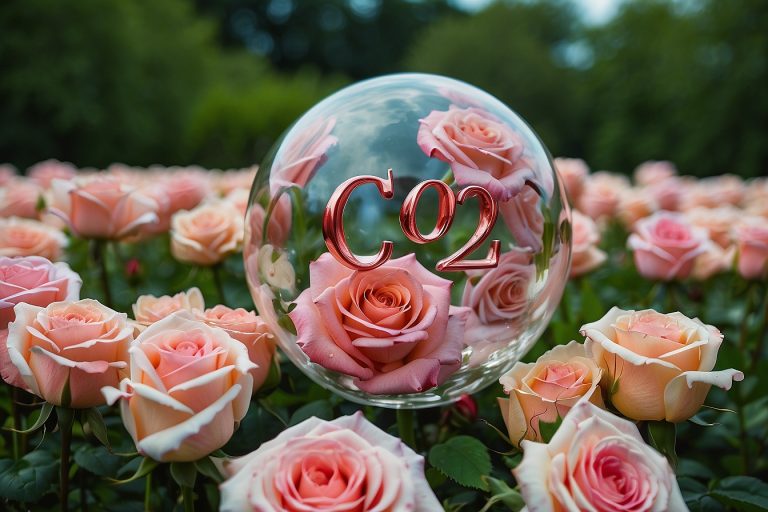The Path to a Sustainable Future: Achieving Net Zero Emissions!
As we live in a rapidly developing world, pollution has become a major problem that continues to worsen with each passing day. Its impact on human health and climate change is now more evident than ever before. The world must take immediate action to reduce carbon emissions to address the issues caused by pollution. Net zero carbon emissions can play a crucial role in creating a sustainable future for generations to come. In this blog, we will explore the concept of net zero carbon emissions and discuss the strategies and solutions that can help us achieve this goal.
What Is Net Zero Emissions?

Net zero carbon emissions means achieving a balance between the amount of carbon dioxide (CO2) we release into the atmosphere and the amount we remove from it. It’s like trying to keep things even for every bit of CO2 we produce, we also find a way to remove or offset it. This helps prevent too much CO2 from building up in the atmosphere, which is important for tackling climate change.
Emissions: When we burn fossil fuels (like coal, oil, and gas) for energy, we release CO2 into the air. This contributes to global warming and climate change.
Removal: To achieve net zero, we need to remove an equal amount of CO2 from the atmosphere. This can happen through various methods, such as planting trees (which absorb CO2) or using technologies that capture and store CO2 emissions.
Balance: At net zero, the total CO2 emissions we produce are offset by the CO2 we remove. So, overall, there’s no increase in net emissions.
Importance: Achieving net zero is crucial to combat climate change and keep the planet safe. It requires urgent action, innovation, and global cooperation.
Understanding The Urgency Of Achieving Net-Zero Emissions!
To understand why achieving net-zero carbon emissions is important, it’s crucial to know that climate change is happening right now, and it’s hurting our planet and future generations. We need to act fast to reduce the damage. Reducing carbon emissions to net-zero is a big step in helping to prevent the worst effects of climate change and keeping our planet healthy for future generations.
The impacts of climate change are already being felt across the globe – extreme weather events, rising sea levels, biodiversity loss, and disruptions to ecosystems are just a few examples. If we continue on our current path of high carbon emissions, these effects will only worsen, leading to irreversible damage to our environment.
Reducing carbon emissions to net-zero is essential to prevent catastrophic climate change. By working towards net-zero, we can limit global warming to a manageable level and protect vulnerable ecosystems and communities. It’s not only a luxury but also a necessity.
India's Target to achieve Net-Zero

India’s Prime Minister, Narendra Modi, delivered an address to world leaders at the COP26 climate change summit in Glasgow, where he announced that India will achieve the goal of ‘net-zero’ emissions by 2070. Scientists have said, there is an urgent need to reduce global emissions by approximately 50% before 2030 and to achieve net-zero emissions by 2050. While most nations have committed to meeting the goal by 2050, China has set a target of achieving net-zero emissions by 2060. Net-zero’ emissions are vital to address climate change and reduce global warming. It requires collective and individual efforts to reduce carbon footprint and achieve a sustainable future.
Prime Minister Narendra Modi, during the COP-26 summit also presented a five-point agenda to address the issue of climate change, which he referred to as the ‘Panchamrit’ (Five Nectars). It was the first time that the Prime Minister of India had announced commitments from India to tackle climate change on a global platform. The most significant announcement among these was India’s endeavor to achieve net zero carbon emissions by 2070. He stated that half of the country’s energy needs would be met through renewable sources by 2030. Additionally, between 2022 and 2030, India aims to reduce carbon emissions by one billion tons. As the fourth point, India has set a target to reduce the intensity of carbon emissions by less than 45% by 2030. The Panchamrit plan will provide a more flexible, sustainable, and inclusive form for economic development. It will undoubtedly play a historic role in the efforts being made for climate change.
India presented the following five nectar elements (Panchamrit) for its climate action:
1: 500 GW Non-Fossil Energy Capacity by 2030
2: 50% Renewable Energy by 2030
3: One Billion Tonnes Carbon Emission Reduction by 2030
4: 45% Carbon Intensity Reduction by 2030
5: Achieving Net Zero Emissions Target by 2070
Global Commitment: Nations Set Targets for Achieving Net-Zero Emissions

The United States: Aims for 100% clean electricity by 2035, laying the groundwork for achieving net-zero emissions by 2050.
China: In September 2020, Chinese President Xi Jinping announced that China would peak carbon emissions before 2030 and would reach carbon Net Zero by 2060.
Japan: Targets a 46% reduction in GHG emissions by FY2030 compared to FY2013 levels, aligning with the long-term goal of net-zero emissions by 2050.
Saudi Arabia: Targets net zero greenhouse gas (GHG) emissions by 2060. By 2030, the country also aims to have 50% of its electricity capacity from renewable sources.
The European Union: targets climate neutrality by 2050, striving for an economy with net-zero greenhouse gas emissions.
Australia: Aims to achieve net zero emissions by 2050 and targets a reduction of 43% below 2005 levels by 2030.
Canada: To combat climate change, the Canadian Government is dedicated to achieving net-zero emissions by 2050.
Germany: Europe’s largest greenhouse gas emitter, aims for net zero emissions by 2045.
The United Kingdom: also committed to achieving net zero greenhouse gas emissions by 2050.
France: Also claims to reach net zero emissions by 2050.
The UAE: Is also aiming for net-zero by 2050.
There are many more countries from different continents, including Europe, Asia, Africa, and America, have set specific targets to achieve net zero emissions. This is a positive sign as it gives us hope that we can reduce carbon emissions and create a sustainable future for future generations. It’s inspiring to see so many countries taking action to combat climate change. By working together, we can make a significant impact on the environment and create a better future for everyone.

